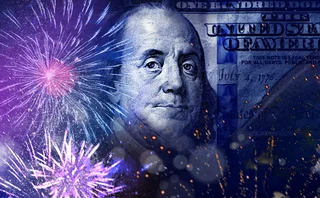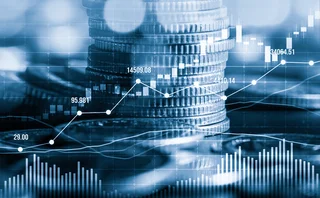

Eurostoxx dislocations signal autocall hedging pain
Weird moves in markets related to popular structured products suggest many dealers struggled to cope with a brutal fourth quarter, when stock indexes tanked around the world, and dynamics more often seen in Asian equity markets leapt to Europe.
The Eurostoxx 50, which underlies an estimated $120 billion equivalent of autocallable bonds, shed more than 11% in the last three months of the year – “a disaster” for structured products issuers, according to one strategist, because their sensitivity
Only users who have a paid subscription or are part of a corporate subscription are able to print or copy content.
To access these options, along with all other subscription benefits, please contact info@risk.net or view our subscription options here: http://subscriptions.risk.net/subscribe
You are currently unable to print this content. Please contact info@risk.net to find out more.
You are currently unable to copy this content. Please contact info@risk.net to find out more.
Copyright Infopro Digital Limited. All rights reserved.
As outlined in our terms and conditions, https://www.infopro-digital.com/terms-and-conditions/subscriptions/ (point 2.4), printing is limited to a single copy.
If you would like to purchase additional rights please email info@risk.net
Copyright Infopro Digital Limited. All rights reserved.
You may share this content using our article tools. As outlined in our terms and conditions, https://www.infopro-digital.com/terms-and-conditions/subscriptions/ (clause 2.4), an Authorised User may only make one copy of the materials for their own personal use. You must also comply with the restrictions in clause 2.5.
If you would like to purchase additional rights please email info@risk.net
More on Markets
Repo and FX markets buck year-end crunch fears
Price spike concerns ease as September’s surprise SOFR jump led to early preparations for bank window dressing
US senators press CFTC on Japan swap clearing
Boozman and Hagerty urge action on yen swap clearing access to JSCC in letter to US regulator
Traders dredge 0DTE data for intraday gamma insights
Firms such as UBS, BofA and OptionMetrics are investing in continuous net options position monitoring
Cross-currency futures could ease bilateral burden – CME
Quarterly €STR-vs-SOFR contract could be used by Stir desks to manage currency basis risk
‘It’s not EU’: Do government bond spreads spell eurozone break-up?
Divergence between EGB yields is in the EU’s make-up; only a shared risk architecture can reunite them
Long gamma puts brakes on post-election US stock rally
Call selling by ETFs helped fuel largest net gamma positioning among dealers since July
Credit risk transfer, with a derivatives twist
Dealers angle to revive market that enables them to offload counterparty exposures, freeing up capital
Consortium-backed FMX eyes push for FX unit
Formerly Fenics FX, the venue has seen growth from dealers and non-banks using its pegged order types and dark pool liquidity








